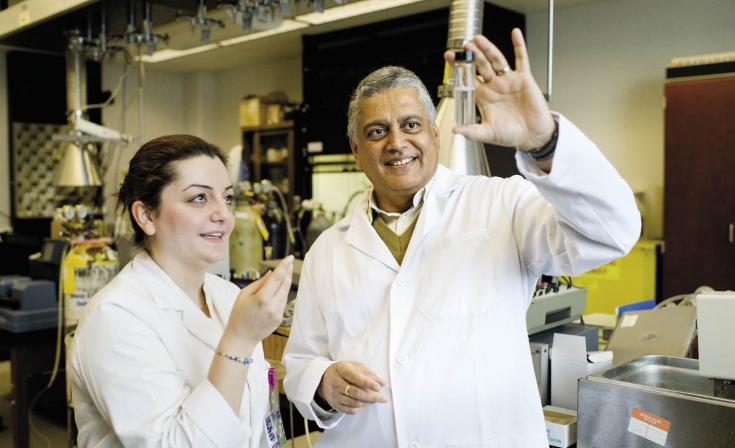
Future Fuel
Researchers creating method to convert carbon dioxide to liquid methanol
Discovering new sources of clean energy and reducing the harmful effects of fossil fuel consumption are two of the world’s most important challenges.
What if both could be done at the same time?
Scientists at UT Arlington think they’ve found a way. They’re working on a method to convert carbon dioxide—the greenhouse gas associated with climate change—into liquid methanol fuel using copper oxide nanowires and sunlight.
“As long as we’re using fossil fuels, we’ll have the question of what to do with the carbon dioxide,” says Krishnan Rajeshwar, a Distinguished Professor of Chemistry and Biochemistry and co-founder of the Center for Renewable Energy, Science, and Technology (CREST). “An attractive option would be to convert greenhouse gases to liquid fuel. That’s the value-added option.”
Dr. Rajeshwar and his team begin the conversion process by coating the walls of copper oxide (CuO) nanorods with crystallites made from another form of copper oxide, Cu2O. In the lab, they submerge those rods in a water-based solution rich in carbon dioxide, or CO2. Irradiating the combination with simulated sunlight creates a photo-electrochemical reduction of the CO2, and that produces methanol.
The process is safer, simpler, and less expensive than previous methods to convert CO2 into a useful product. Those require a co-catalyst and must be conducted at high operating pressures and temperatures. Many also use toxic elements, such as cadmium, or rare elements like tellurium.
Norma Tacconi, a recently retired UT Arlington research professor, co-wrote a paper on the findings for the journal Chemical Communications with fellow CREST researchers Rajeshwar, Ghazaleh Ghadimkhani, Wilaiwan Chanmanee, and Csaba Janaky.




















